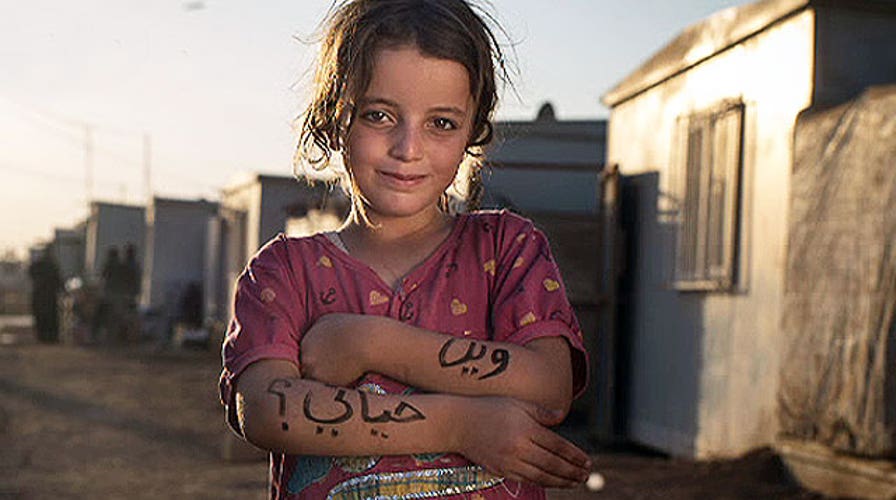The forgotten Syrian voice: Stunning refugee photos
Dear World founder Robert Fogarty’s mission to spread their message around the world
For all the global attention on Syria, all the newspaper headlines, leaders’ speeches and millions of YouTube views, the voices of those bearing the heaviest cost of the conflict are absent from discussions of what to do.
They are refugees, caught in the middle. My fellow photographer Benjamin Reece and I recently traveled to meet some of them in Jordan through a partnership with the humanitarian group CARE.
The refugees seemed so different from me--their dress, their language and their customs.
But I felt like I knew them. Especially when they laughed and cried. And how they described their homes, even down to how the water tasted or how the sands of Syria felt beneath their feet.
I felt like I knew them because I’ve heard stories like these before.
Longing--that pit of your stomach feeling--is the same in any language.
I live in New Orleans and my work is about empowering people and giving them a platform for their voice. Displaced New Orleanians once described heartache--missing their city so badly it hurt--much like how Syrians do now.
[pullquote]
We are truly living in the age of the refugee. Over two million Syrians have left the country to date, thousands fleeing every day. In July, the UN's refugee agency said that 45.2 million people remain displaced from their homes due to worldwide conflicts - a 19-year high.
What does it mean to be a refugee?
You dream about home, your life is on hold and there are clear limits to how you can bend the future for you and the ones you love.
Huda, an 11-year-old girl I photographed, lives in the Zaatari refugee camp. It’s the second largest one in the world.
While in Syria, she was with her family outside their house when a bomb exploded there. She was the only one hurt. The family hid, fearful of more violence, for nearly two days before getting Huda to a hospital.
Huda’s message to the world?
"I want the life I had back."
Despite her burns, she is one of the most beautiful people I’ve had the honor of photographing.
The most powerful photographs during conflict tend to focus on images on people in distress. The more vulnerable a person is in a moment, the more powerful.
Dusty faces, screaming children, and blood are the hallmarks of the dark and dreadful thing we call war. But when Ben and I take photos, we ask subjects to be partners in making the image.
Outside tents and community centers we distributed markers and asked people to share a message to someone or something they cared about. Refugees scribbled across their arms, hands and faces. Often, they wrote things similar to what we all might write no matter our circumstances.
They wrote about hope, fear and love.
Photographs have a unique emotional potential to forge connections. What our portraits show is our common humanity, a crucial bridge into a better understanding of the conflict. The messages of Syrian refugees should be heard by those in positions of power.
Bureaucracy and fighting has made humanitarian access for UN agencies and international relief groups like CARE incredibly limited. António Guterres, the UN High Commissioner for Refugees, warned this month that Syria’s neighbors are "stretched to their limits" with global appeals for funding far from being met.
I want my pictures and these messages to remind the world’s leaders of their responsibilities to refugees. That starts by listening to what they have to say.

